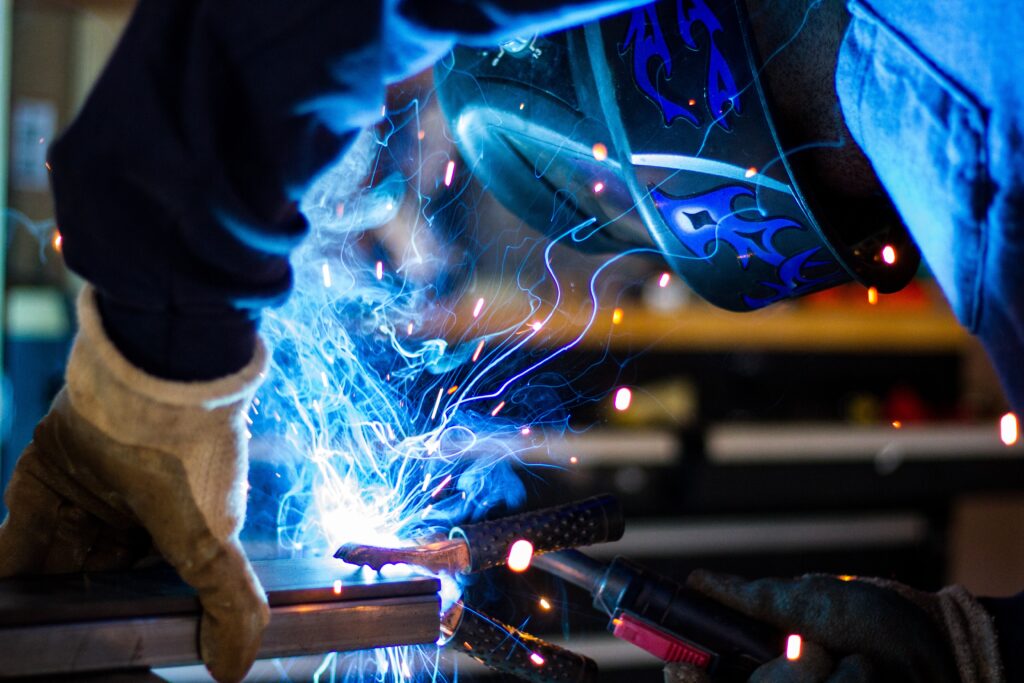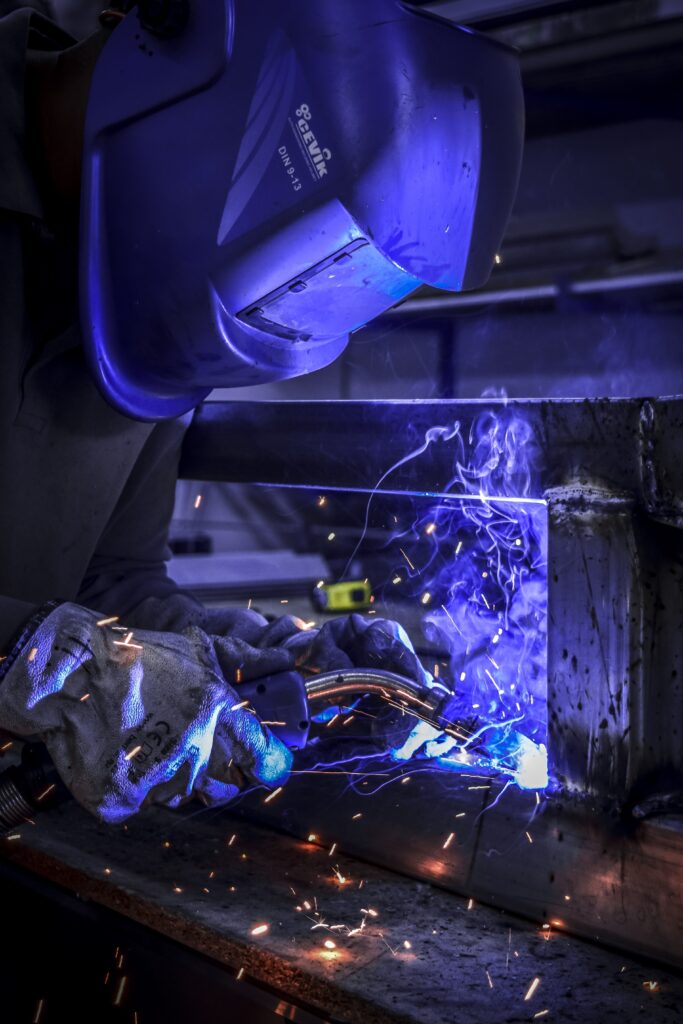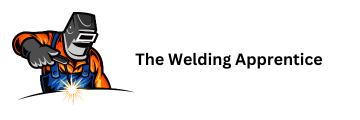If you’ve ever found yourself pondering the intricacies of what the life of a welder could possibly look like from sun up to sun down, then you’re in the right place. “What Do Welders Do All Day?” is an engaging read that sheds light on the varied tasks and responsibilities a typical welder undertakes on any given day. Not only will reading this insightful text broaden your understanding of the skill and precision needed in the world of welding, but it will also instill a newfound appreciation for the craftsmanship and dedication that keeps our world literally and figuratively ‘joined together’. This intriguing product provides a comprehensive behind-the-scenes look at this often underappreciated profession, so gear up and prepare to have your mindset on welding entirely transformed!

Understanding the Basic Duties of a Welder
Definition of a Welder
You may have come across the term welder, but do you know what it means? A welder is a professional who specializes in fusing materials together. They primarily deal with metals, joining them together by heating the surfaces to the point of melting using a variety of techniques and tools.
General responsibilities of a Welder
As a welder, your responsibilities will stretch far beyond merely joining metal pieces. Your role will also involve reading and interpreting blueprints, sketching layouts, inspecting structures, and maintaining your equipment. You need to be well-versed in the technical aspects to meet standards and safety measures.
Daily tasks involved in Welding
If you’re wondering what a typical day in the life of a welder looks like, it involves a series of tasks. These may range from analyzing blueprints at the start of your day, to cutting metal parts according to specific dimensions, lining up components for welding, and finally cleaning up the welded joints and inspecting them for quality.
Types of Welding Techniques
Details on MIG welding
MIG, or Metal Inert Gas welding, is a technique that you’ll often see welders using. It involves the use of a continuously feeding wire that melts to join metals. It’s known for its speed, making it a good choice for projects that require a quick turnaround.
Insights into TIG welding
TIG, or Tungsten Inert Gas welding, is another common technique. Unlike MIG, TIG welding gives you control over the heat input while welding, which results in cleaner and higher quality welds. However, it requires a high level of skill and expertise.
Spotlight on Stick Welding
Stick welding, also known as Shielded Metal Arc Welding (SMAW), is an older welding technique that’s still relevant today due to its low cost and versatility. It works by using an electrode covered in flux to lay the weld, making it an efficient method for rusty or dirty materials.
Exploration of Flux-Cored Arc Welding
Last but not least, Flux-Cored Arc Welding (FCAW) is a semi-automatic or automatic welding process that uses a consumable tubular electrode filled with flux. It’s preferred when you need to weld thick materials, thanks to its high welding speed and portability.

The Process of Welding
Preparing the Materials
A proper welding process starts with preparation. You must clean the surfaces to be joined to remove any oxide layers, rust, dust, or oil. This step ensures a clean and strong joint.
Aligning the Components
Once the materials are prepared, the next step is alignment. Depending on the type of joint and welding technique, you need to hold the parts together tightly in the right position using clamps or fixtures.
Executing the Welding Process
With everything set in place, you then commence welding according to the chosen method, be it MIG, TIG, SMAW, or FCAW. The objective is to create a strong and evenly distributed weld.
Cleaning and Inspection after Welding
After the welding process, it’s important to clean the weld area from slag or spatter. Then you need to assess the quality of the weld. Any slackness here might compromise the structural integrity of the whole piece.
Safety Measures for Welders
Basics of Welding Safety
Safety is essential in welding. Being exposed to extreme heat and light, as well as harmful gases, it’s crucial that you adhere to safety protocols such as maintaining safe distances and protective barriers.
Appropriate Protective Gear
Welders need proper personal protective equipment. This ranges from welding helmets to protect your eyes and face from sparks and light, to flame-resistant jackets, gloves, and safety shoes.
Ventilation and the Prevention of Fume Injury
Ventilation is critical during welding. Working in a well-ventilated area helps prevent the accumulation of fumes and gases. Exhaust hoods, fans, and respirators can offer additional protection.
Welding in Confined Spaces
Special precautions should be taken when welding in confined spaces. Not only should these areas have proper ventilation, but they also need monitoring for hazardous conditions.

Variety of Tools Used by Welders
Overview of Welding Machines
There are different types of welding machines, each designated for a specific type of welding technique. They range from MIG welders, TIG welders, to Stick welders, and Flux-cored arc welders.
Significance of Welding Clamps
Welding clamps are invaluable tools to hold the pieces being welded in place. They ensure a precise and quality weld since any movement during welding can result in a poor joint.
Function of Welding Helmets
Welding helmets guard your face and eyes against extreme light and heat. They are equipped with auto-darkening features to offer protection from harmful light emissions during welding.
Use of Grinders in Welding
Grinders are important for preparing the metal before welding and for refining the weld after the process. They remove any slag or spatter to result in a clean, smooth weld.
Purpose of Measuring Tools in Welding
To achieve accuracy in welding, you will need measuring tools like metal squares, calipers, measuring tapes, and levels. These tools are necessary for aligning and positioning your workpieces properly.
Importance of Blueprint Reading for Welders
The Role of Blueprints in Welding
Blueprints act as maps guiding a welder on where and how to weld. They contain all pertinent information about the piece you’re working on, like dimensions, kind of metal, and specific instructions.
How Welders Interpret Blueprints
Blueprint reading requires technical knowledge as it involves understanding complex diagrams and symbols. You need to analyze and grasp these blueprints before commencing your work.
Common Symbols in Welding Blueprints
Welding blueprints come with a variety of symbols. From basic ones like ‘M’ for manual welding, to more complex ones like ‘SLD’ that stands for slot weld. A good welder should familiarize themselves with these symbols.
Importance of Accuracy in Blueprint Reading
Accuracy in blueprint reading is crucial. Any misinterpretation can lead to wastage of materials, time, and potentially a compromised final product.
Welding as a Critical Component in Various Industries
Welding in Automotive Manufacturing
The automotive industry heavily relies on welding. Cars, trucks, and motorcycles are all built using various welding techniques to join metal parts together, making welding skills indispensable in this sector.
Construction and Welding
In construction, welding plays an essential role in creating strong, durable structures. It is needed in every stage, be it building frameworks, installing pipes, or reinforcing buildings.
Aerospace Industry’s Reliance on Welding
The aerospace industry trusts in the accuracy and strength of welding. Components of aircraft, rockets, and satellites are all bonded together using precise welding techniques.
Role of Welding in The Shipbuilding Industry
Shipbuilding involves a great deal of welding. From crafting the hull to installing pipelines and engines, welding ensures a seaworthy vessel.
Education and Training Required for Welders
Common Educational Paths for Welders
There are various ways to become a skilled welder, from vocational and technical schools offering welding programs, to community colleges and universities providing welding engineering courses.
Types of Training Programs for Welders
Training programs can range from certificate courses that teach the fundamentals of welding, to advanced courses specializing in certain types of welding techniques, blueprint reading, and safety practices.
Importance of Apprenticeships in Welding
Apprenticeships offer a hands-on approach, combining classroom learning with practical experience. It provides a valuable opportunity to learn while working under the supervision of experienced welders.
Necessary Certifications for Professional Welders
For professional recognition, welders need industry certifications. They depend on the type of welding and the industry you wish to work in and prove your proficiency and adherence to industry standards.
Career Prospects and Salary Expectations for Welders
Current Job Market for Welders
The demand for skilled welders is always steady with sectors such as construction, manufacturing, and automotive continuously requiring their services. Career prospects are even brighter for those specialized in advanced techniques.
Expected Salary Range for Welders
The salary for welders varies significantly, depending on factors like your level of experience, the industry you are in, and your geographical location. However, with experience and additional qualifications, you can expect a decent earning.
Long-term Career Prospects in Welding
Long-term prospects in welding are promising. You can seek to become a welding inspector, supervisor, instructor, or even a welding engineer. Each step offers higher pay and more responsibilities.
Challenges and Solutions in the Welding Profession
Common Problems Encountered by Welders
Welders face a number of challenges, from dealing with hazardous working conditions, the physical demands of the job, to the need for continuous learning due to evolving technologies.
Impact of Technology on Welding
As in many other fields, technology is shaping the face of welding. From automated welding machines to new welding techniques, welders must continuously update their skills to remain relevant.
Solutions to Challenges in Welding
Proper training and adherence to safety regulations can alleviate many issues faced by welders. Moreover, embracing technology and continuous learning can provide solutions to most challenges in the profession.
